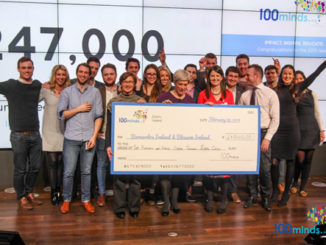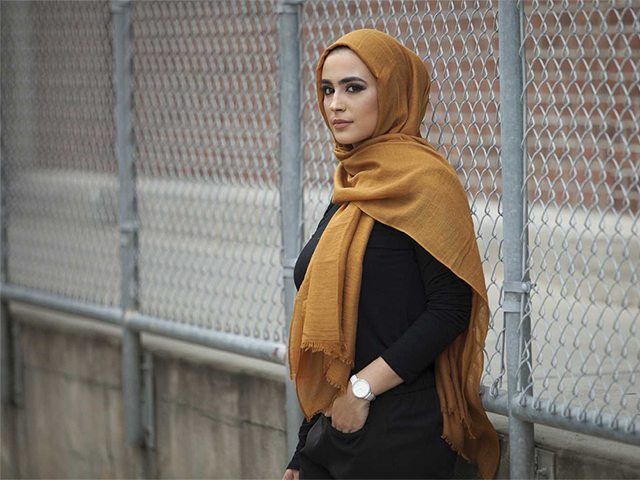
It takes an average person three minutes to bleed to death from a cut in the femoral artery. It took 15 minutes for the ambulance to get there, but Thomas* was lucky.
The day was warm and the atmosphere heated in the conference room. Men and women in suits were escaping from the heat, rushing towards the big glass doors for the freedom of a lunch break.
*Thomas was amongst them, a tall lad towering above the crowd. He was walking out with his teammate, lost in conversation. He had walked through those big glass doors a million times.
Thomas was still talking as he walked straight into the doors, thinking that the person before him was holding it. His leg crashed through the door and shattered the heavy glass.
Within seconds blood was everywhere.
It took him a while to understand; the glass had cut through his trousers and into his leg and had severed his femoral artery.
The warm red liquid was running along his leg and rapidly covering the floor. As he looked up, his workmates were staring at him, faces white as death.
A friend tried to tie a tourniquet on Thomas’ leg but collapsed. There was too much blood.
“Call an ambulance!” someone shouted.
In a daze, Thomas managed to hold a pressure point on his own leg and fought to stay awake.
He remembers hearing the ambulance man shouting, “We’re losing him. We’re losing him!” and as he sank into unconsciousness all he thought was: “don’t… please… don’t let me die.”
In hospital, everything happened very fast, Thomas was immediately transfused and brought to surgery to be stitched up. Five years later he still bears the long slim scar across the back of his thigh.
Fifteen minutes to donate a unit
Each week, 1,000 people receive a blood transfusion in Ireland. It takes less than 15 minutes to donate 450 ml of blood. Fifteen minutes that will make the difference between life and death for many. In that time, Thomas had lost half of his blood supply and was hanging between life and death, without a transfusion it would certainly have been the latter.
According to the Irish Blood Transfusion Service (IBTS), 3.000 donors are needed every week but in 2012, they received only half of that.
“IBTS needs about 90 000 donors per year each to donate once or twice each year which gives us the 142 000 donations we need each year. Any more than this and blood is wasted*, any less there is a shortage of blood for hospital patients,” said Miranda O’Donovan, spokesperson for the Irish Blood Transfusion Service.
*Blood has a shelf life of 35 days.
Constraints and bans
According to the IBTS website, three per cent of Irish people give blood in Ireland and only five per cent of the Irish population eligible to donate do so: there are many restrictions surrounding blood donation to protect both donors and transfused such as age, weight, viruses, tattoos and piercing.
The “gay ban” is the most controversial; men who have sex with men (MSM) are prohibited to give blood in Ireland. The policy was first introduced in the 1980s when it became apparent that HIV could be spread by blood transfusions. The ban was adopted before a test for HIV infection in blood donors was developed. The first HIV test was developed in 1985 to screen out HIV from the blood supplies.
In a 2011 press release, the IBTS confirmed that the ban would remain, after it was announced that the UK blood services would remove the ban to men who hadn’t had homosexual relations in a year.
In their release the IBTS explains that there is “no exclusion of gay men who have never had sex with a man nor of women who have sex with women.”
The 2004 European directive indicates a permanent deferral on “persons whose sexual behaviour puts them at high risk of acquiring severe infectious diseases that can be transmitted by blood” but does not directly target MSM.
In their archived FAQs from March 2008, the IBTS acknowledges the discriminatory aspect of the ban and adds that “in recent years heterosexual females have overtaken IV drug users and homosexual men as the largest group of new HIV cases in Ireland.”
Other European countries such as Spain or Italy don’t have any indications against MSM blood donors.
Education, Religion and Donation
Less than one in four eligible Europeans has given blood at least once according to a 2010 survey by the European commission. France, Autria, Cypress and Greece have the highest donor rates. Ireland was ranked fourteenth with 38 per cent.
France has the second highest donation rate in Europe with over half of those eligible having donated at least once. France’s blood services have equipped buses that regularly go around villages, town, school, universities and workplaces with medical staff on board to collect blood.
In France, like in Ireland, the blood services try to encourage donors by rewarding those that come regularly. Some will receive letters or medals marking key events such as reaching your fiftieth donation or the first donation medal. An award ceremony takes place in Ireland on World Blood Donor Day each year, with 250 donors honoured last June.
Both countries rely heavily on voluntary unpaid donors for their blood supply and encouraging the population to donate is vital.
The survey shows a link between the religious practices and the donation rates, finding that non-religious people donate more than those who are religious.
Many reasons are given for not donating, mostly linked with level of education. Some of the most common are fear of needles, fear of HIV or other infections, no time, fear of being feeble afterwards, with perhaps the main one being that they simply don’t care.
Marie Lecoq
*Names were changed to protect the privacy of the person mentioned.




Leave a Reply